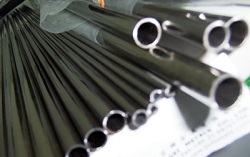- Home page /
- New technologies and equipment /
- Tantaline Enters Oil And Gas Market With Corrosion...
Tantaline Enters Oil And Gas Market With Corrosion Technology For Sour Gas
24.09.2012

Tantaline, the world’s leading producer of tantalum surface alloys for hot acid environments, has announced its product availability for the oil and gas industry.
As the world’s demand for energy continues to increase, traditional easy-to-reach oil reserves are becoming scarcer. As a result, oil exploration is being carried out in geological formations and regions that would have been previously unthinkable. Today’s practices involve deeper drilling supplemented by oil well stimulation. This technique involves the injection and use of strong acids to improve production and maximize resources. While this approach has shown quantifiable improvements within well extraction, it can be rife with corrosion challenges that compromise efficiency, safety and effectiveness.
Oil well stimulation by acidizing methods involves pumping a variety of acids, including hydrochloric acid, sulfuric acid and acetic acid, through tubular goods into an oil reservoir to remove formation damage and increase porosity in the formation. This acidizing practice often causes extreme corrosion on equipment and is vastly accelerated with the presence sour gas (H2S) at high temperatures, pressures and concentrations, creating material degradation and constant maintenance issues for engineers. Tantaline, with the most corrosion resistant metal commercially available today, is uniquely suited to address these challenges.
“Materials represent one of the biggest barriers to accessing ultra-deep oil wells,” said Dean Gambale, president of Tantaline Inc. “While companies seek to expand production by opening new wells, corrosion remains a critical barrier in very deep sour wells. Tantaline offers a wide array of readily available process equipment and instrumentation that can counter the most corrosive environments.”
One proven test case showing the viability of Tantaline was conducted by Honeywell Corrosion Solutions, led by Brian Chambers. The laboratory study was designed to evaluate the corrosion resistance of multiple alloys to simulate acidizing in deep production wells. Several classes of alloys were tested, including stainless steel (316L (UNS S31603)), nickel-based alloy (C276 (UNS N10276)), titanium alloys (Ti 6-4 (UNS R56400) and Ti 6-2-4-6 (UNS R56260)), and 316L surface-alloyed with tantalum (Ta).
The results showed that Tantaline had a zero corrosion rate while nickel-based alloy suffered extreme corrosion rates and all of the other state of the art materials were completely dissolved within eight hours.

